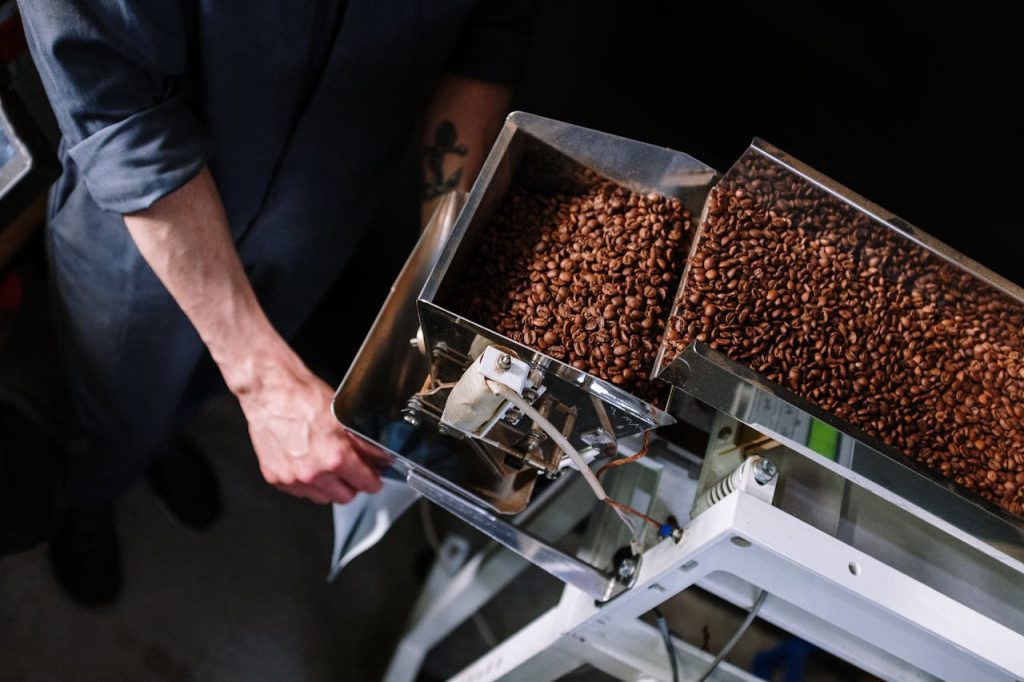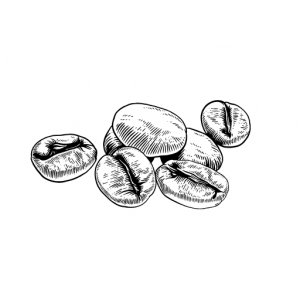Arabica coffee, a name synonymous with smooth flavor and captivating aroma, reigns supreme in the hearts of coffee connoisseurs worldwide. Its journey, however, extends far beyond the steaming cup. It’s a captivating tale of origins, meticulous cultivation, and a dedication to unlocking the bean’s full potential. This comprehensive guide delves into the world of Arabica coffee, exploring its history, unique characteristics, and the factors that contribute to its exceptional taste.

A Legacy Steeped in History: The Ethiopian Roots of Arabica
The story of Arabica coffee begins in the verdant highlands of Ethiopia, a land boasting the greatest genetic diversity of the Coffea arabica species. According to historical accounts, coffee beans first embarked on their global journey from the lush forests of Ethiopia’s southwestern region, reaching Yemen where they were cultivated as a crop. These early plants served as the foundation for generations of breeders and farmers who meticulously selected and cultivated dozens of widely grown Arabica varieties, each uniquely adapted to its local environment.
Recent advancements in genetic research have shed light on the origins of these Yemeni-grown plants. Studies reveal that the primary seeds transported from Ethiopia were closely related to the Typica and Bourbon varieties. Descendants of these varieties spread across the globe, becoming the cornerstone of modern Arabica coffee agriculture. Interestingly, despite its Ethiopian heritage, Brazil now holds the title of the world’s largest producer of Arabica coffee.
Cultivating Excellence: The Delicate Dance of Arabica Coffee Growth
Like any other crop, different coffee varieties thrive under specific conditions. Arabica coffee beans demand higher altitudes, a factor that contributes to their complex flavor profile and characteristic acidity. While this elevation enhances taste, it comes at a cost for farmers. Slower growth rates at higher altitudes can affect productivity and ultimately, the cost of the beans.
Compared to its counterpart, Robusta coffee, the delicate Arabica plant takes twice as long to mature. While Robusta coffee plants reach full maturity in just 3-4 years, Arabica coffee requires patience, taking 5-7 years to blossom into its full potential. Despite this slower growth, Arabica coffee exhibits a remarkable resilience to colder temperatures (though not frost). After 2-4 years of patient nurturing, Arabica trees unveil beautiful white blooms with a captivating jasmine-like fragrance. Once carefully pruned, these fragrant flowers give way to deep crimson berries, each containing a pair of precious coffee beans.
The Essence of Flavor: Why Arabica Coffee Reigns Supreme
Arabica coffee is renowned for its mild and refreshing taste, often described as light and brimming with notes of fruit, flowers, and caramel. This exceptional flavor profile comes at a premium, making Arabica beans generally more expensive than other coffee varieties. In contrast, Robusta coffee boasts a significantly higher caffeine content and higher levels of chlorogenic acids, both factors contributing to its characteristically bitter, leathery, or woody taste. While these qualities might not seem appealing, they serve an important purpose – these elements act as a natural defense mechanism, helping Robusta trees fend off insects and pests. Unfortunately, this advantage comes at a cost, as Arabica coffee plants are more susceptible to insect attacks.
Beyond its natural defenses, Arabica coffee’s superior taste can be attributed to its higher lipid and sugar content. These components significantly enhance the fragrance, body, and overall taste of the coffee. The sweetness of the beans contributes to a smoother mouthfeel while reducing bitterness, creating a more enjoyable coffee experience. Another factor contributing to Arabica’s consistent flavor profile is its natural tendency for cross-pollination. This process leads to greater genetic diversity within the beans, ensuring a more consistent and predictable flavor profile across harvests.

Beyond the Coffee Bean: A Celebration of Variety and Expertise
The world of Arabica coffee extends far beyond a single flavor profile. Over centuries, meticulous cultivation and natural selection have resulted in a remarkably diverse array of Arabica varieties, each boasting its own unique taste characteristics.
- Yirgacheffe: Hailing from Ethiopia, Yirgacheffe beans are known for their bright, citrusy acidity and floral notes, offering a refreshing and invigorating cup.
- Colombian Supremo: Colombian Supremo beans deliver a well-balanced and nutty flavor profile, a favorite among coffee purists.
- Sumatra Mandheling: Indonesian Sumatra Mandheling beans offer a rich, earthy, and full-bodied experience, often with hints of chocolate and spice.
- Kenyan: Kenyan coffee beans are celebrated for their lively acidity and refreshing citrus notes, often described as “winey” or “tea-like” in their complexity.
- Geisha: Panamanian Geisha beans are considered some of the rarest and most prized Arabica varieties in the world, known for their delicate floral aromas, hints of stone fruit, and exceptional sweetness.
This is just a glimpse into the vast and exciting world of Arabica coffee varieties. Each region cultivates its beans under unique conditions, with specific processing techniques further influencing the final flavor profile. Exploring different varieties allows coffee enthusiasts to discover a world of taste sensations, a testament to the dedication and expertise of coffee farmers worldwide.
The Art of Processing: Transforming Coffee Bean to Brew
The journey from bean to cup doesn’t end with cultivation. Processing techniques play a critical role in unlocking the full potential of Arabica coffee beans. Here are three primary processing methods:
- Washed: This method involves removing the fruit flesh from the coffee cherries after picking. The beans are then fermented and thoroughly washed, resulting in a clean and bright cup with pronounced acidity.
- Natural: Natural processing allows the coffee cherries to dry on the branch with the fruit flesh still intact. This extended contact with the fruit imparts fruity and floral notes to the beans, creating a more complex and full-bodied coffee.
- Honey: Honey processing falls somewhere between washed and natural methods. After picking, some, but not all, of the fruit flesh is removed from the coffee cherries before drying. This method creates a flavor profile that bridges the gap between the clean, bright notes of washed coffee and the fruity complexity of natural processing.
Understanding these processing techniques empowers coffee enthusiasts to choose beans that align with their taste preferences. Experimenting with different processing methods alongside bean varieties allows for a truly personalized coffee experience.
A Celebration of Coffee Culture
Arabica coffee is more than just a beverage; it’s a culmination of history, meticulous cultivation, processing expertise, and a deep appreciation for flavor. From its Ethiopian origins to the diverse varieties cultivated worldwide, the journey of Arabica coffee is a testament to human ingenuity and a love for this captivating beverage. Whether you’re a seasoned coffee connoisseur or just embarking on your coffee exploration, the world of Arabica offers a wealth of flavors and experiences waiting to be discovered. So, brew a cup, savor the aroma, and appreciate the intricate story behind every delicious sip.


